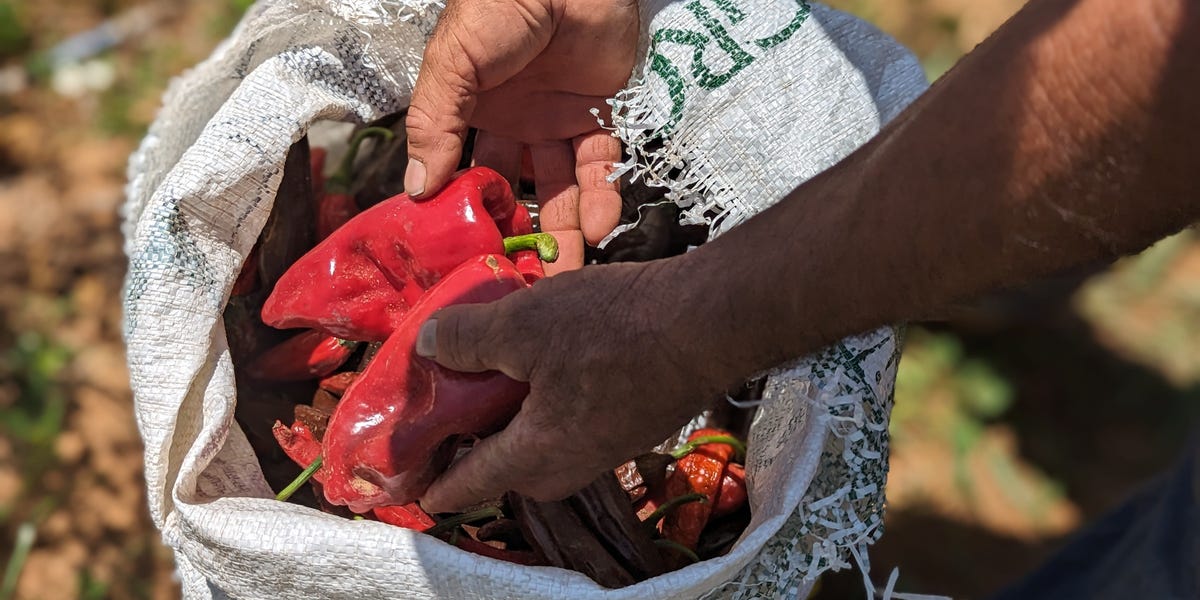Tariffs are putting at risk the only single-origin Mexican chiles that could become available in the United States. Once removed from their native environment, chiles grown in Mexico don’t retain their distinctive flavor. Celebrity chef Rick Bayless remarks that the restaurant industry is now living in fear of potential tariffs.
Sweet, fruity, and savory, a shipment of single-origin Mexican chiles—previously unavailable in the US—is currently sitting at the Southern border. However, due to former President Trump’s fluctuating tariffs, they might never reach your spice racks. For over two years, Ethan Frisch, the CEO of Burlap & Barrel, a public benefit corporation, has been striving to import a batch of heirloom chiles recognized for their rich flavors and health benefits from a farm in Querétaro, Guanajuato, to consumers in the US.
After initially losing the shipment of chiles due to drought and insect infestation in 2023, Frisch dedicated the following year to hiring a professional processor, conducting research trips, and preparing the farm to operate as an exporter rather than relying on a third party. Following a successful growing season in 2024, approximately 3,000 pounds of processed and ground chiles are finally ready for American households, but they are now facing the threat of a 25% tariff at the border, which could significantly diminish profits or hinder the objective of making them widely accessible.
“There’s been a lot of stop and start,” Frisch reflected, recalling discussions with his team after the briefly paused tariffs resumed in early March. “We were like ‘let’s stall, the tariffs are in place, don’t get this across the border right now.’ And then a couple of days later the tariffs are gone and we’re like ‘go, go hurry, let’s get them across before the tariffs come back.’
“This is a spice we would like to be a daily staple in someone’s kitchen, but with a 25% tariff in place, it really alters the price dynamics. We’re uncertain if we could even sell the full quantity we secured at that elevated price,” he added. If a significant quantity of chiles doesn’t sell this year, the project may not be sustainable for another year to cultivate market interest. Even if sold at a higher price, average-income households might find them unaffordable given current consumer attitudes.
A Rich Culinary Heritage of Chiles in Mexico
Mexican chiles undergoing the drying process.
Ethan Frisch/Burlap & Barrel
While Americans might perceive chiles as a uniform category, these spicy fruits are distinguished by various names and uses in Mexico based on their harvest time, color, thickness, moisture, and drying techniques. During his visit to Oaxaca to explore the history of chiles, Frisch discovered that not only are people evolutionarily attracted to spice, but modern medicine is only starting to recognize the health benefits of capsaicin compounds in chiles, such as their effects on inflammation, muscle recovery, and arthritis—benefits that have been acknowledged in traditional practices in Central America for ages.
The specific chiles that Frisch devoted years to importing are guajillo, ancho, and pasilla. The guajillo possesses a bright taste and lighter color, while the latter two exhibit the texture of raisins and robust flavors reminiscent of dried tomatoes to dark chocolate. Though chiles bearing these names might also be cultivated in some specialty farms in the US, this shipment represents the only native heirloom chiles of these varieties grown in Mexico by an artisan farmer that could potentially enter the US market.
“Each variety of chile is distinct because these plants are highly adaptable and can vary dramatically regarding taste and heat across different regions worldwide,” Frisch remarked. “That adaptability is almost a reflection of human migration.”
Rick Bayless, a celebrated chef who operates Michelin-starred restaurants specializing in Mexican cuisine, is among those eagerly awaiting the arrival of these chiles across the border. “In the past, everyone connected through food with different people, but we’ve really lost a lot of that connection,” Bayless said. “My enthusiasm for single-origin foods, like these chiles, largely stems from the belief that they help me and my customers reconnect with that direct bond.”
Bayless noted that he had previously made efforts to bring the same chile seeds to the US and cultivate them, but the flavor did not compare—it simply wasn’t as good. If the tariffs are implemented, it could limit access to a variety of unique products, potentially leading to the removal of some items from his menu. “Importers, distributors, and restaurant chefs I frequently communicate with all live in anxiety because we can’t predict what might happen,” Bayless added. “If you have steel that sits in a warehouse for years, it remains fine, but perishable food products don’t share that luxury.”













